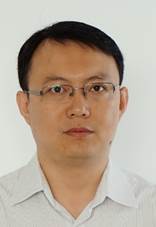Hyperbranched polyethoxysiloxane-a unique silica precursor polymer for preparation of silica-based nanostructured materials
SEMINAR
The State Key Lab of
High Performance Ceramics and Superfine Microstructure Shanghai Institute of Ceramics, Chinese Academy of Sciences
中 国 科 学 院 上 海 硅 酸 盐 研 究 所 高 性 能 陶 瓷 和 超 微 结 构 国 家 重 点 实 验 室

Hyperbranched polyethoxysiloxane – a unique silica precursor polymer for preparation of silica-based nanostructured materials
朱晓敏
德国亚琛工业大学工业及高分子化学研究所,莱布尼茨交互材料研究所
时间:2019 年 4 月 12 日(星期五)上午 10:30
地点:长宁园区2号楼 607会议室
欢迎广大科研人员和研究生参与讨论!
联系人:陈航榕(52415305)
报告摘要:
Monomeric tetraethoxysilane is the best-known silica precursor in a sol-gel process. Here we show a unique silica precursor polymer, hyperbranched polyethoxysiloxane (PEOS), which is a highly hydrophobic liquid and exhibits interfacial-activity in an oil/water system due to amphiphilicity induced by hydrolysis of ethoxy-groups at the oil/water interface. PEOS can stabilize different kinds of emulsions such as oil-in-water, water-in-oil, water-in-oil-in-water and even high-internal-phase emulsions without any additional surfactants. After conversion of PEOS to silica, the internal phase can be encapsulated in silica. When a monomer is used as the oil phase, the synergy of polymerization and PEOS conversion can lead to the formation of polymer@SiO2 core-shell particles, nanocapsules, nanorattles or Janus-like particles as the result of a delicate interplay between PEOS hydrolysis and condensation rate, polymerization kinetics, emulsion stability, and phase separation in the emulsion droplets. In another approach, PEOS becomes amphiphilic via substitution with hydrophilic poly(ethylene glycol) monomethyl ether. The amphiphilic PEOS derivatives can self-assemble in water and the resulting soft assemblies are subsequently converted to mesoporous aerogel particles with very low density, hollow nanoparticles or ultrasmall solid particles under basic conditions depending on the degree of substitution. It is shown that enzyme can be encapsulated in silica hollow nanoparticles with a high efficiency by dispersing the suitable amphiphilic silica precursor polymer in the aqueous solution of the enzyme. The microencapsulated enzyme exhibits significantly enhanced stability against the change of environmental conditions and can be repeatedly regenerated without a significant activity loss.
报告人简介:

朱晓敏博士,1973年生于上海,现任德国亚琛工业大学工业及高分子化学研究所高级讲师。1992年由教育部公派到俄罗斯莫斯科国立大学化学系学习。1997年以全优成绩硕士毕业后继续攻读博士学位,并于2000年获得博士学位。2001年赴德国乌尔姆大学Martin M?ller教授课题组从事博士后研究,2002年随课题组一起转到亚琛工业大学。2002年获得德国洪堡基金会洪堡学者称号。2004-2008年为德国羊毛研究所课题负责人。2008年取得亚琛工业大学终身教职,并成为纺织及高分子化学教研室行政副主任,同时也担任莱布尼兹交互材料研究所课题负责人。共发表论文67篇,拥有3项专利和1本专著。到目前为止总共获得16项科研资助项目,经费总额超过650万欧元。


 当前位置:
当前位置:

